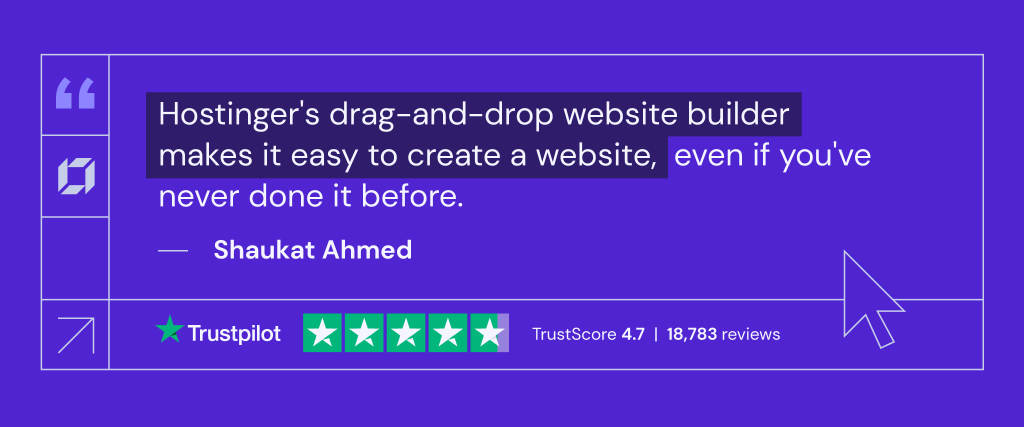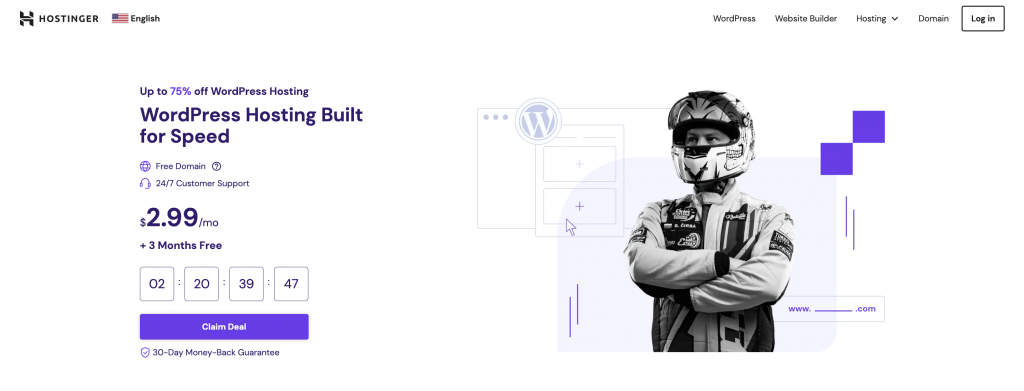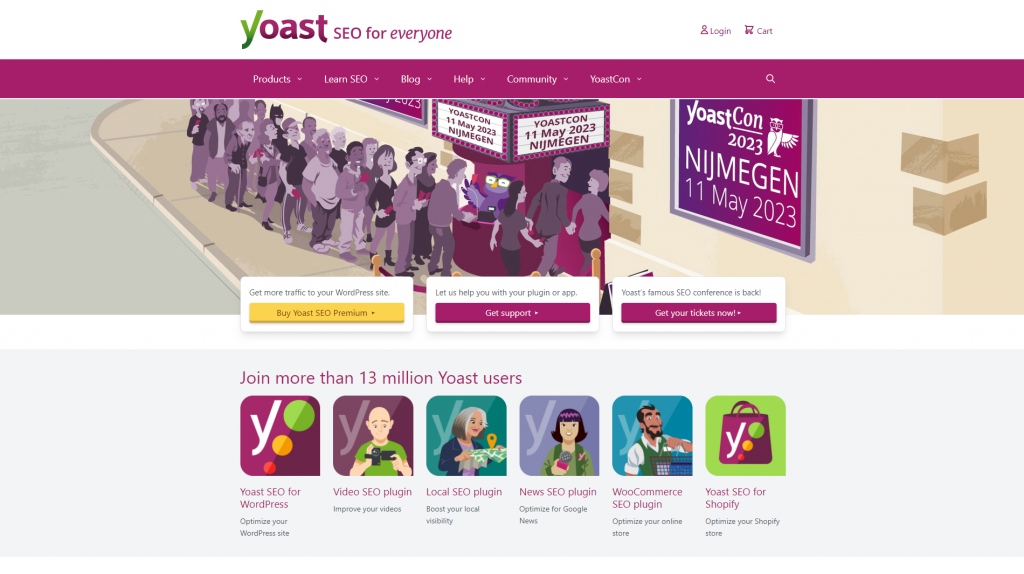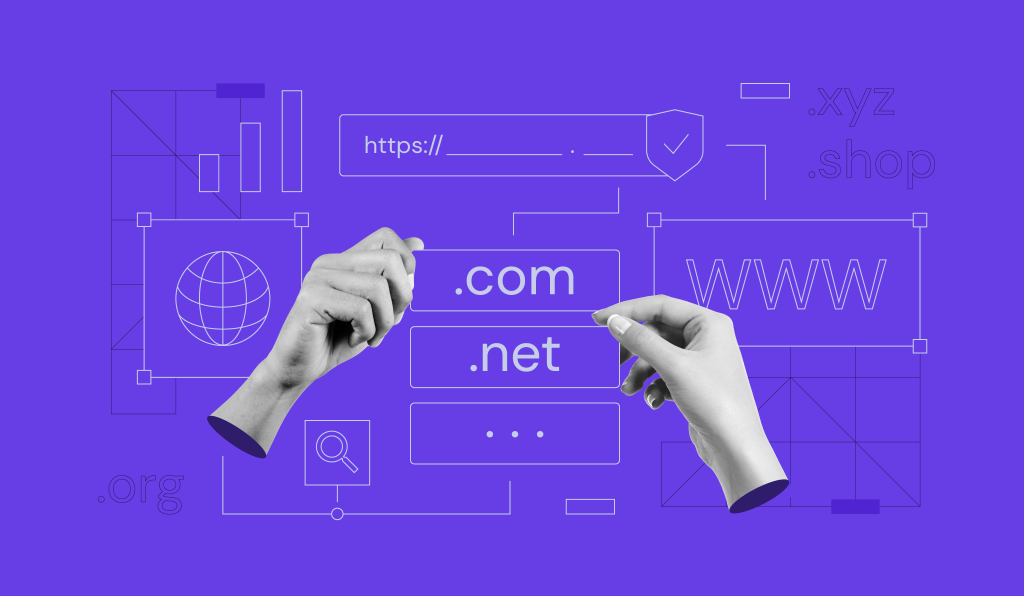How to Plan a Website: 8 Steps to Streamline Your Site Planning Process
Building a website can be a daunting task, especially when you don’t have a clear vision and objectives. To avoid this, planning should be a priority before you initiate the website-building process.
A good website planning checklist can ensure the project goes smoothly. However, some people may struggle to formulate an effective website structure plan that covers all the necessary steps to ensure efficiency.
With this in mind, we will look at eight essential steps to develop a website strategy. But first, let’s go over the benefits of website planning.
Download website launch checklist
Why Website Planning Is Important
Having a well-thought-out plan before building a website is crucial for your web development project. This is when you closely identify why you need a website in the first place and use it as the main deciding factor for various aspects of the project.
We’ll look at four benefits of having a well-planned website project to understand how important the planning process is.
Understand the Project Scope Better
A clear project scope helps create a smooth and efficient development process. A good website plan should include factors like specific objectives, costs, deliverables, and deadlines.
For example, during the website planning process, you can identify how many web pages you need to create, how long it will take to build them, and the resources you need. Doing so will give you a clear estimation of the project’s timeline and help you spend resources more efficiently.
Avoid Cost Overruns
With some websites, especially larger ones, detailed budgeting is essential for the project’s success. You don’t want to overspend on the website because you didn’t anticipate the requirements beforehand and had to pay twice.
A website project plan lets you estimate the site-building cost by identifying objectives. It also helps you anticipate possible setbacks and prepare for emergency costs.
Cater to the Audience’s Needs
With website planning, it is easier to determine the appropriate site’s functionality, content, and design style. These elements are important to create a user-friendly and well-designed website that caters to your target audience.
Prepare for Legal Requirements
There are some legal pages you need to include in your website, depending on its type and purpose. These may include data collection and privacy policies, copyright requirements, and data security rules.
Other website types, like eCommerce, will require you to include additional policies for payment, refunds, and shipping. By planning ahead, you can prepare the necessary documents before launching your website and avoid the hassle of dealing with possible legal repercussions.
How to Plan a Website in 8 Steps
Now that you understand the importance and benefits of project preparation, it is time to find out how to create a website plan. We will go through eight stages and factors to consider when planning a website.
1. Write a Detailed Description of the Website
Creating a detailed site description is arguably the most important aspect of the website project plan. This document should start with core information like the mission statement, website goals, business objectives, and brand guidelines.
These factors will be the basis of every decision you make during the web design process. After that, explain the desired outcome of the website. For example, if you build a website for a coffee shop business, its main goals will be to increase sales through online bookings and sell products via an eCommerce store.
Proceed by covering the means to achieve the main goal. List all the pages required and how users will interact with them. This should cover the website’s design, user flows, as well as web page content and layout.
Ideally, these decisions should be based on actual data. Consider conducting user research during the discovery phase to figure out important information like audiences’ demographic, their current pain points, and purchase behavior.
On top of that, visit your competitor sites and conduct a competitive analysis to find out their strengths and weaknesses. Doing so can give you more ideas on how to plan a website structure.
Additionally, go beyond general statements and include a detailed description of how you intend to use the website in the plan. This way, it will work better as a guideline for your website project rather than just a brief overview of the final product.
Having a detailed description of the website also helps with collaboration and project management. Larger website projects typically require a development team. Therefore, a detailed project plan can help key stakeholders to be on the same page.
2. Establish the Project Requirements
Once you have a detailed vision and description of the final product, list the requirements for your website project. These may include details like the website-building timeline, budget, and team size limitations.
This is where an elaborate website description will play a big role. When you have a clear idea of how many web pages you need, what type of design you want to use, and what features you want to include, it is easier to measure the requirements.
Keep in mind that your project requirements should correspond to your available resources. For instance, small businesses may not be able to afford to hire a professional web designer. They’ll need to find another alternative, like premade website builder templates or free WordPress themes for their web design.
3. Plan Resources for the End Goal
After you list the requirements, plan the resources to achieve your objectives. In this step, you need to take a closer look at each web development component and determine your priorities.
Prioritizing components allows you to avoid overspending and focus your budget on certain elements that can’t be replaced. For example, you can save money by using the free version of WordPress plugins and allocate the budget to get a good web hosting service or buy a custom domain.
Consider adding some post-launch spending, like website maintenance costs, that will come soon after you launch the site.
4. Map Out the Process With a Wireframe
A website wireframe is a tool to initiate the web design process. This is the first step of implementing the site’s information architecture into a more visual representation.
However, a wireframe doesn’t include aesthetics like styling, color schemes, and graphics. It typically maps site elements like the space for content, search bar, and navigation menu buttons.
The main purpose is to create a base of how the site will look and as a guideline for the design process. Additionally, a wireframe helps ensure the site will have optimal usability and user experience.
The detail and effort required for this step may vary depending on your project’s scale. Building a single-page portfolio site using a premade template in a website builder means you can skip this process entirely.
However, a larger site with a more complicated site structure will require you to make a more comprehensive wireframe. Consider using wireframing tools like Wireframe.cc or MockFlow to help you create a detailed website layout plan easier.
5. Get a Web Hosting Plan and Domain Name
Another important part of planning a website is to know how to choose the right hosting plan and domain name. Researching for a good domain and hosting provider during the planning process lets you find one with features that fit your needs.
Some key points to consider when getting a hosting plan are:
- Reliability – choose a web hosting provider that offers a 99.9% uptime guarantee to avoid losing potential customers due to your site being inaccessible frequently.
- Speed – visitors are likely to leave a website that doesn’t load in under three seconds. Therefore, choosing a provider that can give you the best speed is essential.
- Security – look for a host that prioritizes web hosting security. Without applying proper protection measures, your website will be more vulnerable to cyber-attacks that will put your users at risk.
- Price – compare the available options to find a solution that offers the best value for your budget. Be sure to check renewal prices and scaling opportunities.
Take your time to read their product descriptions to fully understand what these products offer. Consider also checking customer testimonials to find out their experiences using the service.
Additionally, remember to consider the domain name price. Some domains may cost more than others, depending on their characteristics and extension.
However, there are ways for you to save costs on the domain name. For example, signing up for a 12-month Hostinger’s Premium Hosting Plan will give you a free domain for a year.
This plan also includes unlimited bandwidth and a free Secure Sockets Layer (SSL) certificate, making it a great value for your money.

6. Choose a Website Platform
There are three main ways to create a new website – using a content management system (CMS), utilizing a website builder, or custom coding it.
Let’s take a look at each of them to help you understand which one is the best for your needs.
Website Builders
Using a website builder is arguably the easiest and fastest way to create a site. This type of platform typically offers an intuitive interface that lets you create a website without coding.
The best website builders also have a library of premade web design templates you can use and customize to fit your needs. This makes website builders a perfect choice for beginners who want to avoid complicated design and technical setup processes.
Furthermore, solutions like Hostinger Website Builder include a hosting service, a domain name, and AI tools, so you can immediately focus on creating the site.
Hostinger AI Website Builder is ideal for creating landing pages, personal portfolios, blogs, eCommerce stores, and other types of websites quickly and efficiently.
It uses AI for creating a website based on a few inputs, like a brand name and a brief description, in just a few minutes.

However, for more customization options, like using third-party plugins, the next options might fit your needs better.
Content Management System
A CMS lets you create and manage your site with a beginner-friendly graphical user interface. One of the most popular examples of CMS is WordPress. Building a WordPress website is a good option if you want more flexibility and scalability. Consider using a managed WordPress hosting platform that offers automatic CMS installation and expert support for a seamless site creation experience.
The WordPress platform has numerous customization options since it is open source. You can also find various plugins to add functionality and themes to customize the site’s look and feel.
Since WordPress is free, you can allocate the budget for premium plugins, themes, and the hosting provider. Finding resources and tips for using WordPress is also relatively easy due to its popularity.
However, most CMS, including WordPress, require some degree of a learning curve. If you are a beginner, you may need to spend some time learning how the platform works, which can prolong the project’s timeline.

Custom Coding
Some more advanced and larger-scale projects may require creating a website from scratch with custom code. This typically requires a more extensive design and development team that handles different tasks and responsibilities to upload the site online.
On the other hand, creating a site using custom code opens up almost limitless customization possibilities.
However, this is not a beginner-friendly option, requiring much more time and resources to develop.
Still Can’t Decide Which Platform to Choose?
If you still have a hard time deciding which platform suits your project the best, read our tutorials to get a closer look at how each platform compares to the other.
Website Builder vs CMS
Website Builder vs Coding
WordPress vs HTML
7. Plan the Web Design and UX
The next step is to plan the site appearance and user experience (UX) design. A well-designed website is visually appealing and improves the user experience.
Every decision you make while designing the site should revolve around the user journey. Create a detailed website design plan that covers how users will interact with various elements on the site, starting from the homepage to the navigation menu.
To maintain a good user experience, you must make the site easily accessible on mobile devices. Considering that more than half of the global website traffic is from mobile devices, having a mobile-friendly website is essential.
The site’s visual design also needs to follow a certain style guide. Use color schemes and typography that appeal to your target audience while maintaining accessibility and readability.
This visual design should be similar throughout the entire site to help you build a brand identity effectively. Consider checking other websites for design inspiration and use tools like Color Hunt to help with your website design process.
Alternatively, you can opt for AI-generated website design, which streamlines the process and offers creative solutions based on your written requirements.
Suggested Reading
Check out the following tutorials to learn more about ensuring good website performance and user experience.
Website Optimization: Top 10 Strategies to Improve Speed
Web Accessibility
Web Usability Testing
8. Create a Content Strategy
Content is the core of your website. This is why most users visit your site in the first place. Because of that, content creation should be one of the most important parts of your marketing strategy.
Before you go ahead and create content, you need to make a strategy to ensure your content’s success. First, you need to understand different types of content and how they can drive more organic traffic to your site.
Written content like blog articles, news, and tutorials are great for informing or educating your audience about a certain topic or event. This type of content is typically quicker to produce and easier to update compared to other formats like multimedia.
With the right search engine optimization (SEO) methods, like incorporating relevant keywords into your content, your website will rank higher in Google and other search engines. This will also increase your credibility and authority in the niche.
To create SEO-friendly content, consider using tools like Ahrefs, Google Trends, and Yoast SEO.
Audio content like podcasts is perfect for long-form discussions. This format lets you deliver a more in-depth and interesting look at a recent topic.
Meanwhile, video content can make learning more convenient with more visual and audio aids. It is also relatively easier to show your personality in videos compared to blog posts.
You can also benefit from the popularity of short-form videos and upload clips to social media platforms like TikTok and Instagram to promote your site.
The downside of audio and video content is that they are not as easy to update as the written format, mainly because they involve more steps like scripting, recording, and editing that take more time and effort.
Of course, your site content is not limited to the promotional ones. For example, eCommerce website owners also need to pay attention to their product listings. They need to make sure that all information in the listings is up to date and accurate to avoid miscommunication with customers.
The key to content publishing strategy is consistency. Plan out how you would create new content and update the existing ones to maintain the audience’s interest in your website.
Conclusion
Just like any other project, building a new website requires you to create a plan to ensure efficiency and success. With good project management, you can save more time and money during your website-building process.
A well-planned website is also more likely to be effective, user-friendly, and meet the reader’s needs.
There are eight essential steps to making a good website development plan:
- Write a detailed website description
- Establish the project requirements
- Plan resources to achieve objectives
- Map out the site using a wireframe
- Get a hosting plan and a domain name
- Choose the right website platform
- Plan the design and UX
- Create a content strategy
Even though some details might differ depending on your project’s scale and personal preferences, this website planning checklist and as well as understanding the basics of building a website should help you prepare for creating a new site.
How to Plan a Website FAQ
In this section, we will answer some of the most frequently asked questions about how to plan a website.
How Do I Finalize My Website Project’s Budget and Timeline?
The key to figuring out your project’s budget and timeline is a deep understanding of your desired final product. This lets you know the scope of your project, key objectives, and what you need to achieve them. With this information, creating an accurate budget and timeline planning for your project should be easier.
What Technical Requirements Should I Consider When Planning My Website?
Essential technical aspects to consider when planning your website include its mobile-friendliness, hosting provider quality, page load time, and security. All these factors play an important role in ensuring a great user experience for your website.
Who Should Be Involved in the Website Planning Process?
The number of people involved in the planning process depends on the website scale. Small and personal websites like blogs might only need one planner and executioner of the project. However, large-scale projects like corporate websites will involve key stakeholders, the project manager, and team leaders during the planning stages.
All of the tutorial content on this website is subject to Hostinger's rigorous editorial standards and values.








